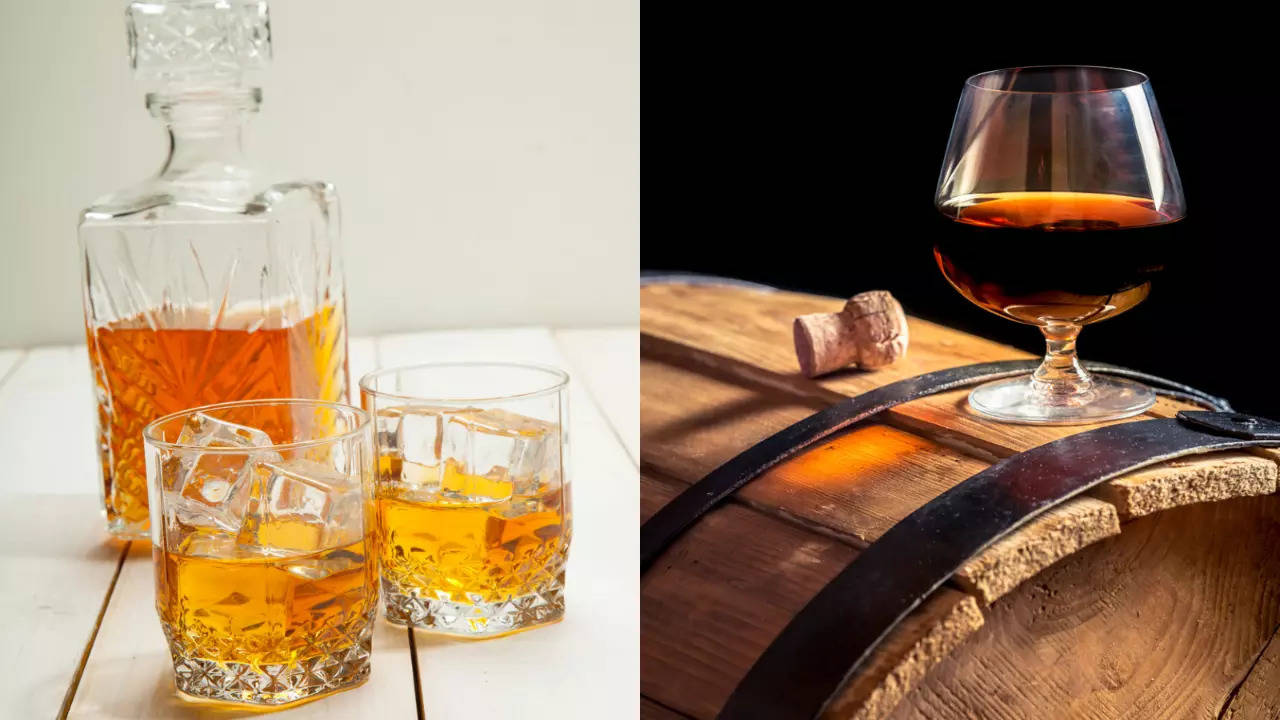Table of Contents

In the world of fine spirits, brandy and cognac are often counted as a sip of sophistication and tradition. However, these two drinks are frequently misunderstood, with many unaware of what distinguishes them from one another. While both spirits share some similarities—most notably being derived from fermented fruit juices, usually grapes—their production processes, geographical origins, and flavours offer distinct differences that can enhance your appreciation of each. If you have seen these spirits on craft cocktail menus or enjoy sipping them neat, it is time to uncover what truly separates brandy from cognac. Let's understand these spirits to elevate the drinking experience.
Also Read: Hyderabad Foodie Guide: 5 City Bloggers Recommend What And Where To Eat
What Is Brandy?
Brandy is a broad category of spirits that can be made from the distillation of fermented fruits. Grape brandy, which is the most popular, is distilled from white wine and then aged in wooden casks, typically oak. However, brandy can also be made from other fruits such as apples, pears, cherries, raspberries, peaches, and plums. For instance, well-known varieties include Calvados, an apple brandy from Normandy, France; Framboise, a raspberry brandy from Alsace; and Slivovitz, a plum brandy from Eastern Europe.
Brandy comes from the Dutch term ‘Brandewijn,’ meaning ‘burnt wine,’ and it refers to the distillation of grape wine unless another fruit is used, such as in apple brandy. Brandy can be enjoyed in many forms—neat, on the rocks, or mixed into cocktails such as sangria or pear-brandy drinks.
The typical alcohol by volume (ABV) for brandy ranges from 35% to 60%, and the flavour profile varies based on the type of fruit, distillation method, and ageing process. Whether made from grapes or other fruits, brandy’s versatility allows it to shine both as a sipping spirit and a cocktail ingredient.
What Is Cognac?
Cognac, on the other hand, is a type of brandy, but one that must meet very specific standards to earn its name. Cognac is exclusively produced in the Cognac region of France and is distilled from wine made primarily from Ugni Blanc grapes. It must be distilled twice in copper pot stills and aged in French oak barrels for a minimum of two years, although premium cognacs are often aged much longer.
Cognac is highly regulated under the Appellation D'Origine Contrôlée (AOC), which dictates everything from grape varietals and distillation to aging and blending processes. This strict regulation ensures that cognac maintains its signature flavour and quality.
Often served in a snifter glass, cognac boasts complex flavours of dried fruits, nuts, and spices, with a smooth, luxurious finish. It can be enjoyed neat as an aperitif or digestif, or as the key ingredient in classic cocktails like the Sidecar or Sazerac.
Key Differences Between Brandy And Cognac
Ingredients
Brandy: Can be made from a variety of fruits, with grapes being the most common. Other fruit-based brandies must be labeled accordingly (e.g., apple brandy).
Cognac: Must be made from specific grape varietals, mainly Ugni Blanc, and must adhere to the strict guidelines set by the AOC.
Region Of Production
Brandy: Produced worldwide, from France to the United States, and even across Europe.
Cognac: Must be produced in the Cognac region of France, which is divided into six distinct areas such as Grande Champagne and Petite Champagne.
Distillation And Aging
Brandy: Can be distilled in pot stills or column stills, depending on the style and region. The aging process varies, with some brandies aged for a few months, while others for several decades.
Cognac: Must be distilled twice in copper pot stills and aged in French oak barrels for at least two years, although many cognacs are aged much longer. The aging process is strictly monitored, giving cognac its rich flavour profile.
Fermentation And Flavour
Brandy: Offers a wide range of flavours, depending on the fruit and aging process. From sweet and fruity to bold and spicy, brandy is highly versatile.
Cognac: Known for its refined and layered flavour profile, cognac often features notes of dried fruit, vanilla, spices, and oak due to the longer aging process in specific barrels.
Alcohol Content
Brandy: Typically has an alcohol content ranging from 35% to 60%, with variations depending on the region and style.
Cognac: Usually maintains a consistent ABV of around 40%, due to the strict regulation of its production process.
While both brandy and cognac share a common origin in distilled fruit, they represent different levels of craftsmanship and tradition. Brandy is an umbrella term encompassing a wide variety of fruit-based spirits produced around the world, while cognac is a specific type of brandy crafted with great precision in a defined region of France. So, the choice is yours.

